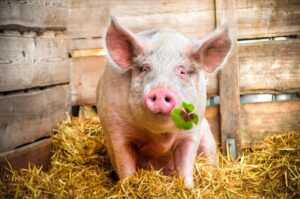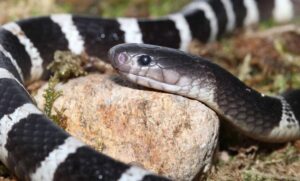Some species of birds, fish, mammals, and insects can gather in massive groups of millions to trillions of individuals. So, if you’re also wondering about them, join KnowAllAnimals to explore a list of animals that live in large groups today. Enjoy!
1. Top 4 Animals That Live in Large Groups and How They Survive Together
In the natural world, some animal species choose to live in large herds or flocks to increase their chances of survival. This cohesion helps them protect one another, find food more effectively, and maintain ecological balance.
1.1. Birds
In early 2020, ornithologist Noah Strycker from Brooks University in the U.S. found himself walking among thousands of chinstrap penguins on Elephant Island, a remote landmass covered in snow and ice off the coast of Antarctica. He was there to conduct a survey of the penguin colony, which had not been accurately surveyed since 1970.
The final survey by Strycker and his colleagues showed that chinstrap penguins do indeed form one of the largest bird flocks in the world, with about 2 million individuals concentrated in locations like the South Sandwich Islands. This discovery prompted Strycker to search for the answer to an even more ambitious question: what is the largest animal group ever recorded on Earth?
Strycker embarked on his mission and found that the chinstrap penguin colonies in the South Sandwich Islands were easily “outnumbered” by another bird species called the red-billed quelea, which lives on the savannas of sub-Saharan Africa.
“They gather in very large flocks with millions, tens of millions, and possibly up to hundreds of millions of individuals,” Strycker said. “I think they are the most abundant bird in the world.”
Red-billed queleas are so numerous that observers say it can take five hours for a single flock to fly overhead. However, they are still not the most numerous bird flock.
“There are stories about flocks of passenger pigeons flying over observers’ heads for hours or even days. It’s crazy!” Strycker added. A gathering in 1866 was recorded to be 1.6 km (1 mile) wide and 482 km (300 miles) long, estimated to contain about 3.5 billion pigeons, based on counts per square mile and extrapolated by the flock’s size. Today, the passenger pigeon has been hunted to extinction.
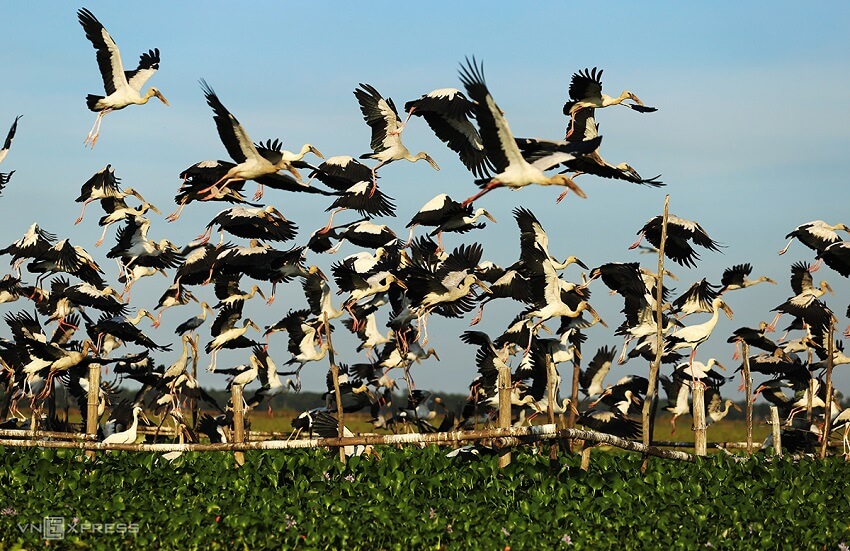
1.2. Fish
Moving from the sky to the depths of the ocean, there are records of a fish species—specifically, the Atlantic herring—gathering in schools of more than 4 billion, far surpassing the previous frontrunner, the passenger pigeon.
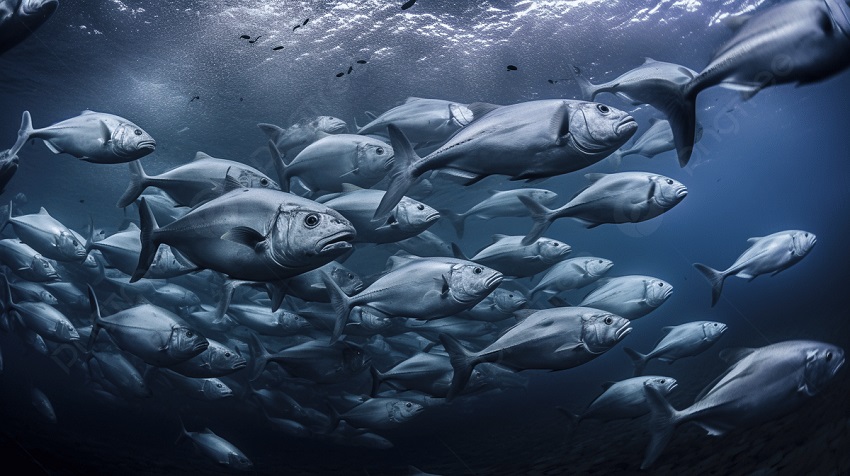
1.3. Mammals
Mammal species don’t reach the massive numbers of Atlantic herring, but their herds are still worth mentioning. They include the springbok and wildebeest of southern Africa. In the past, they have gathered in herds of over 1 million individuals, marching across the grasslands for weeks at a time.
But even more impressive is the Mexican free-tailed bat (Tadarida brasiliensis). In Texas, a single cave is home to more than 20 million of these bats. When they leave the cave to forage, they form a massive, undulating cloud in the sky.
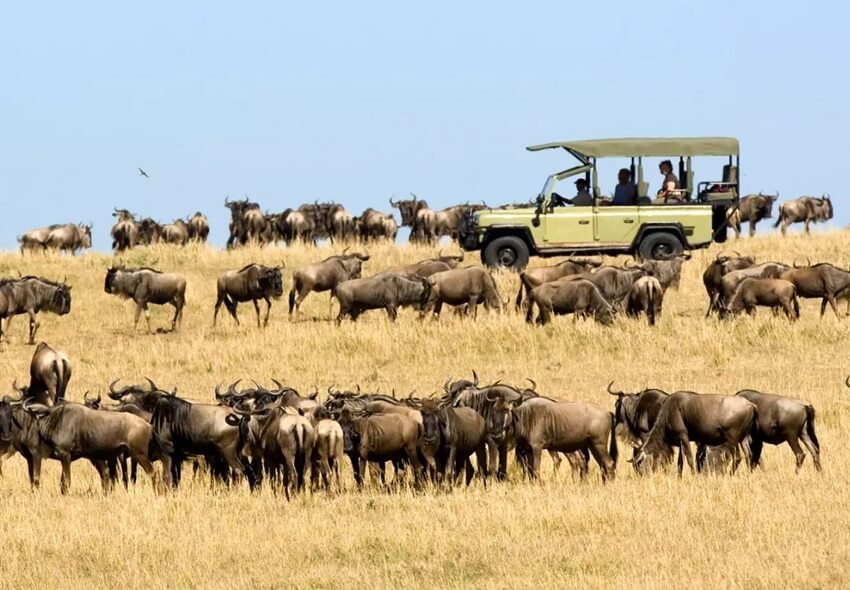
1.4. Locusts
The record for the largest group of animals in the world belongs to locusts. In East Africa in early 2020, a cloud of desert locusts swept across the sky, spanning thousands of square kilometers.
“It was like a black blanket covering the sky, so dense that it was very difficult to see the clouds,” described researcher Emily Kimathi at the International Centre of Insect Physiology and Ecology in Kenya.
That particular event was the largest swarm observed in the Horn of Africa in 25 years. Experts estimated that they gathered with a density of about 50 million individuals per square kilometer, which means that the single swarm contained about 200 billion locusts. Desert locusts are known for their ability to reproduce very quickly, which can increase their population by 20 times over a three-month period.
200 billion is an astonishing number, but data from the past shows that locust swarms can grow to be much larger under ideal environmental conditions. In 1875, a meteorologist named Albert Child was stunned to see locusts flying overhead in a massive swarm that covered a large part of the western United States. The species was the Rocky Mountain locust, and Albert estimated that they covered a sky area of 512,800 square kilometers.
This historical event is known today as “Albert’s swarm.” Based on the meteorologist’s estimates, their number could have reached 3.5 trillion individuals. This is believed to be the largest group of animals in a single swarm ever recorded by humans.
Like the passenger pigeon, the Rocky Mountain locust is now extinct, with the last living specimen observed in 1902 in southern Canada. But their historic flight remains a record that is very difficult to break.
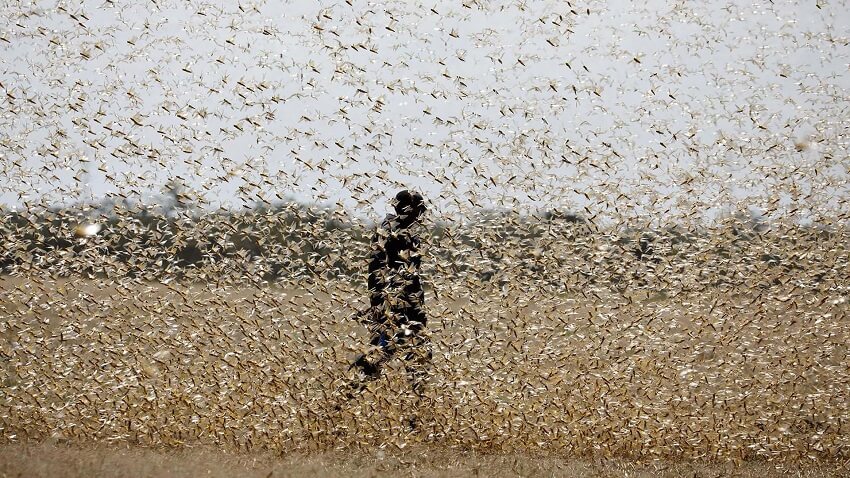
2. FAQs
1. Which bird species has the largest flock ever recorded?
That would be the passenger pigeon, with a flock that could be up to 482 km (300 miles) long and 1.6 km (1 mile) wide, containing an estimated 3.5 billion individuals based on a 1866 observation.
2. In the ocean, which species gathers in the largest numbers?
The Atlantic herring leads the way in fish population numbers, with schools of more than 4 billion individuals gathering together.
3. What mammal species gathers in extremely large groups?
Among mammals, including wildebeest and springboks, the Mexican free-tailed bat stands out, with a single colony in a Texas cave of up to 20 million individuals that create a spectacular display when they fly out at once.
4. Which insect currently holds the record for the largest swarm on the planet?
That would be the desert locusts in East Africa, with an estimated density of up to 50 million individuals per square kilometer, totaling a swarm of about 200 billion. Historically, there are even records of swarms of up to 3.5 trillion.
5. Which animal both lives in water and has such a large population?
The Atlantic herring is a classic example of an aquatic species that gathers in massive schools, with over 4 billion individuals—far surpassing many land animals.
By exploring the Top 4 Animals That Live in Large Groups, we can clearly see the power of unity in nature. From protecting each other from predators and sharing food to sustaining the species, each animal has a unique survival strategy. These giant gatherings not only create a spectacular sight but also underscore the role of cohesion in the wild world. This is also a reminder for humans about the importance of cooperation and ecological balance in our own lives.

